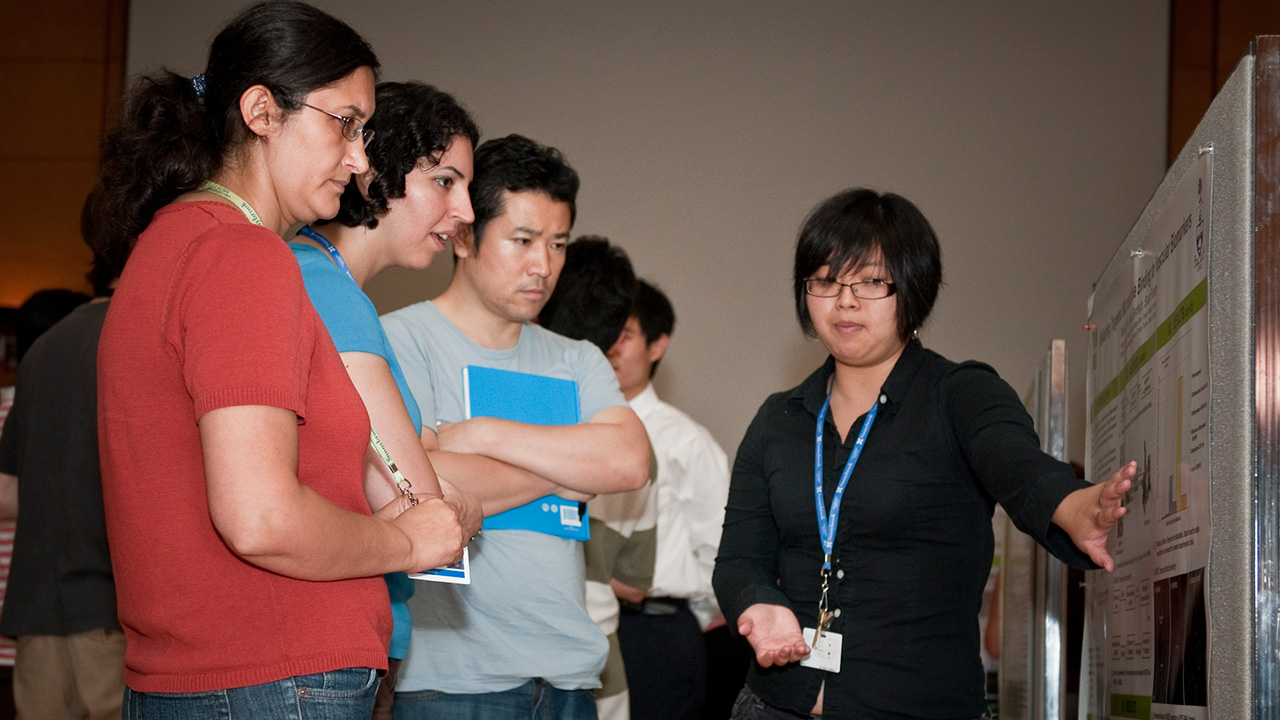Crowning Tomorrow's Medical Scientists
By Alisa Kim
They've been hard at work over the last four months—carefully monitoring experiments, painstakingly recording observations and keenly searching for possible explanations for their findings. On August 20th, undergraduates from Sunnybrook Research Institute (SRI) had a chance to share their discoveries through poster presentations at this year's best summer research project competition.
The competition marked the end of the summer student research program, through which 104 undergraduates were hired by SRI. In addition to working in the lab—a first for many—students attended a weekly seminar series that allowed them to learn about various research areas and topics, and interact with SRI scientists.
Sunnybrook's McLaughlin auditorium, the venue for the competition, brimmed with activity as students busily explained their research projects to judges and other onlookers. At 45 entries, this year's competition was one of the largest in recent memory and represented the disciplines of clinical epidemiology, clinical integrative biology (CIB), imaging, and molecular and cellular biology (MCB). Four students—one from each discipline—took the top honours; in addition there were three second-place winners and one third-place winner.
Roman Shapiro, who was supervised by Odette cancer research program director Dr. Richard Wells, placed first in MCB for his project, "The odd couple: the role of EAR-2/RUNX1 interaction in the pathogenesis of MDS."
The fourth-year University of Toronto student was inspired by the science on display. "All of the posters I saw at the competition were very well done," he says. "When I saw an interesting result on a poster, I could tie it in with some of the work that I did. I am happy to have won the competition in [my] division, but I am actually happier to have seen some of those posters because they have given me some new ideas for future experimentation."
Other award winners were:
- Brett Shannon (second place, MCB), "No more cord blood? Using ID2 to create a line of stem-like cells," supervised by Dr. Juan Carlos Zúñiga-Pflücker;
- Celia Lai (first place, clinical epidemiology), "Accurate interpretation of electrocardiograms: validation and identification of challenges," supervised by Dr. Douglas Lee;
- Fahima Dossa (first place, CIB), "Interactions between white matter hyperintensities and hippocampal atrophy in Alzheimer's disease," supervised by Dr. Sandra Black;
- Gary Peng (second place, CIB), "Mechanisms of hypercapnia-induced regression of vascular remodeling in chronic neonatal pulmonary hypertension," supervised by Dr. Robert Jankov;
- Michael Kreder (third place, CIB), "Prognosticating acetabular fractures using CT analysis," supervised by Dr. Cari Whyne;
- Sheldon Kwok and Priscilla Lai (first place, imaging), "Power Doppler ultrasound analysis of tumour vasculature changes due to ultrasound mediated microbubble enhancement of radiation," supervised by Dr. Greg Czarnota; and
- Melissa Yin (second place, imaging), "Validating targeted microbubble binding to vascular biomarkers," supervised by Dr. Stuart Foster.
As the competition drew to a close Dr. Michael Julius, vice-president of research at Sunnybrook, thanked the supervisors for their involvement in the program. Speaking on their behalf, he congratulated the students on their accomplishments. "You are the lifeblood not only of the future, but also of us. We learn from you in ways that each of us could not imagine."
PDF / View full media release »


